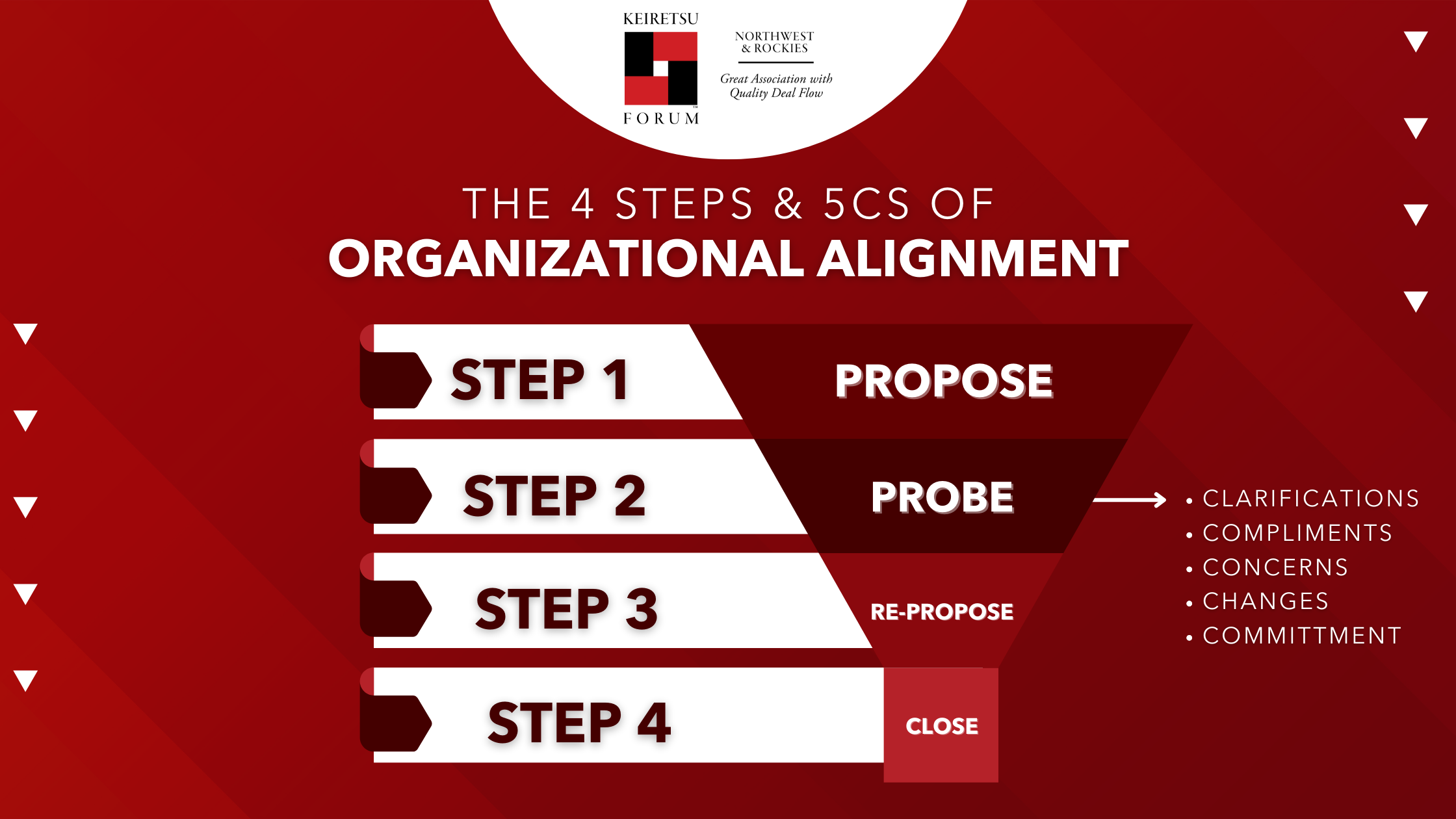
The last couple of years have completely changed how we live our lives, not only that but it has also revolutionized how businesses function and evolve to get better. The increasing unpredictability has also boosted the need for organizational alignment more than ever.
But what actually is organizational alignment? The primary goal of organizational alignment is to ensure that a company and its team work towards the strategic goals laid by the leadership team. It becomes more vital when a startup is in its early stage. Alignment covers several aspects such as setting goals for the organization, developing strategies for interacting with employees, realizing their potential, and integrating and leveraging their strengths.
Patty Beach, author of The Art of Alignment, spoke to our investment community and explained how alignment in startups benefits founders, investors, and teams. She also touched on how effective alignment can positively impact the return on investment.
Why Alignment Is Crucial for Startups?
In a startup, alignment plays a major role to ensure mission, vision and values are understood and followed by everyone including team members, investors, suppliers (if any), and also customers. If an effective alignment strategy is not in place between the internal and external stakeholders, then the productivity is hugely impacted.
|
Who are the key players in organizational alignment? |
What are the core goals of organizational alignment? |
|
|
Leaders of the organization play an important role in making sure things are in place for better growth. They consistently need to make sure that people are included and their voices are heard, which in turn creates a sense of belonging for all. A good alignment in the startup ensures decisions and crucial problems are solved together so that they move forward effectively at fast pace.
The Art of Alignment:
Patty Beach has codified the art of alignment as a skillset that involves:
-
3 Principles
-
4 Steps
-
5 Cs (referring to process of getting feedback)
These allow an entrepreneur to lead their organization more effectively at every step of their journey. She also points out that encouraging a different way of thinking improves ideation and leads to better conclusions. However, organizations need to commit to this ideology to transform ideas into reality.
Let’s look at the 3 Principles of Organizational Alignment:
The principles listed below are more or less the mindset that the leader adopts for better organizational alignment.
1. Iterative Co-creation:
The primary goal of this principle is to let the leaders know that “full organizational alignment” is not a one-step process. It cannot be achieved by bringing people together and showing them a presentation.
Alignment can be facilitated by including members to work together towards achieving a goal or idea. Leader must ensure that people’s opinions are noted. To practice inclusion, you need to accept that everyone gets a voice but not everyone gets a vote!
This means that as the leader you need everyone to come together and voice their opinion and whenever a decision is made you take those into consideration. But at the end of the day, as the founder or lead investor, you retain the veto power to decide the future of the company.
The iterative co-creation process allows leaders and investors to hear new train of thoughts from their team.
2. SHUVA Principle:
SHUVA stands of Seen Heard Understood Valued and Appreciated according to Patty. Here is a deeper understanding of this principle:
Seen: This is the simple act of noticing people in organization. An entrepreneur should ensure that every member of their organization is invited to meetings and are fully focused on the discussion. In virtual environment, it can be ensured by turning on their cameras and responding via chat so that their attendance is registered across the team.
Heard: Whenever an idea is presented, the leader must hear the feedback from every member. This can be difficult in a large organization but use of polls and online forms can be useful.
Understood: A lot of times people in the organization just nod through the meetings whenever they are asked if they understood the idea or topic of discussion. However, this misalignment doesn’t mean that they were able to grasp everything; it’s done out of courtesy. As a leader the best way to measure this is by regular feedback.
Valued: As a leader, it is crucial to value those who share their feedbacks or opinions. This not only encourages the person to speak their thought but also can help in making better decisions. And once the judgement takes place people know that their feedback or opinion is valued.
Appreciated: Appreciating anyone for their good provides satisfaction and mental peace. This is why lauding the members for their positive work and opinion should be done.
SHUVA is more practical principle than theory. It creates a psychological safety within the team for better alignment.
3. Versatility Principle:
As a leader, you need to have a healthy discussion of the issue and balance the male and female aspects of the meeting. This means that you balance these opposing energies equally.
For example, in a business environment, we often want to keep everything objective, factual and evidence-based, without excluding people's feelings, doubts, reservations, and concerns. It is important to be able to help everyone meet their individual needs while catering to the wider collective. When we work in this multifaceted way, regardless of our gender or gender identity, we can balance the enormous male and female energy and find solutions that we not only think is good, but what we think is a good solution and get maximum volatility.
4 Steps and 5 Cs:
Both these processes are meant to achieve a singular goal i.e., moving from diverging mindset to converging.
Step 1: Propose – This is the polite way of suggesting ideas instead of declaring them. The idea here again is to include team to hear opinions and then making a decision.
Step 2: Probe – This is where you explore the proposed ideas. This phase includes the 5Cs of organizational alignment: Clarifications, Compliments, Concerns, Changes & Commitment. Leaders are advised to follow the order above, shifting the conversation from divergent to convergent thinking.
Step 3: Repropose – Once the discussions are done after hearing the opinions, the changes must be done (if needed) by the leader. Finally, the idea should be reproposed to the team.
Step 4: Completion – At last the decision is made and the process is completed.
5 Cs is a daily process that should be practiced for better team alignment. The 5Cs are Clarifications, Compliments, Concerns, Changes & Commitment.
Clarification: Asking and clarifying things to team members whenever they have a doubt so that they are not in the dark in the meeting. Confirmation from the team lets you know if they got the message.
Compliments: The best way to boost your team morale’s is by providing compliments on every small feat achieved. This creates a psychologically caring environment and improves team inclusion.
Concerns: Sharing concerns with the team lets the leader get feedback and understanding stance of the team on the subject. Or if a leader has concerns related to a team or member, then they should be relayed properly.
Changes: Once the concerns are known, it is the right time to make changes for better outcome on the idea or topic of discussion.
Commitment: Finally, the leader needs to be committed to transparent participation so that they know what areas are aligning and what needs to be worked on.
Following these fundamentals will not only help build a better team but also ensure that the organization is going forward in the right direction.
About the speaker:
Patty Beach is the author of The Art of Alignment: A Practical Guide for Inclusive Leadership and the Versatility Factor Profile, an assessment for gender intelligence and inclusive leadership. As the founder of LeadershipSmarts, she is known as an inclusive leadership evangelist who combines leadership best practices and coaching to transform managers into the best boss ever and executives into inspirational role models that can scale and grow the company. You can watch the complete keynote here.






